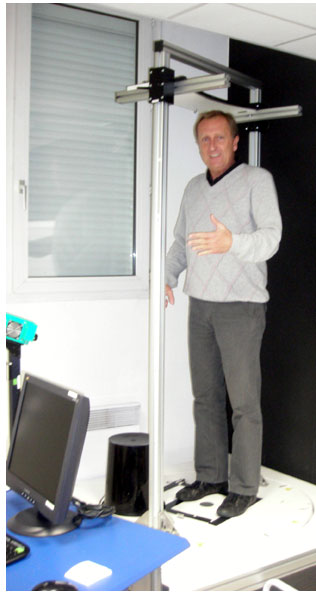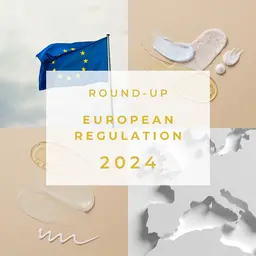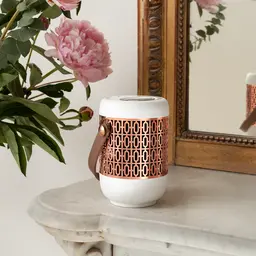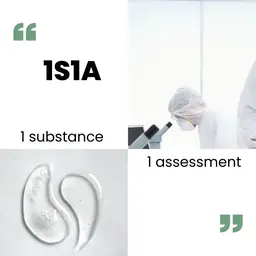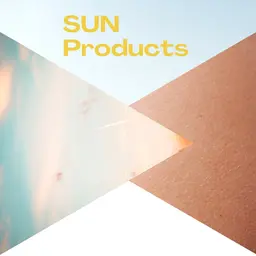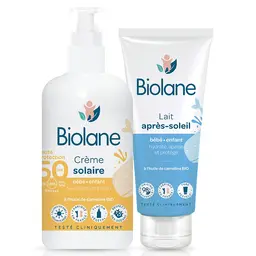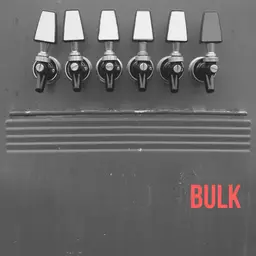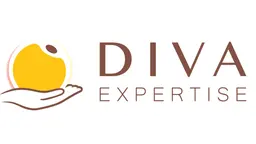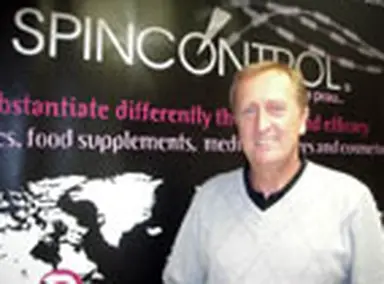
The tests prove it, we are told, but how do they prove it? We still have our doubts, don't we? What are these tests? How reliable are they? How much credibility can be given to the figures they roughly display on the labels of our cosmetics? Response at Spincontrol, which we visited with its General Manager, Patrick Beau.
Go through the door of Spincontrol: you enter a standardized atmosphere. Here, hygrometry, light, temperature… everything is under control, and always identical. Even better, reproducible. And whatever the weather conditions outside, in this city of Tours where are located the French premises of this laboratory specialized in comet tests. Yes, whether it's raining or windy, whether the city is drowning in snow or being crushed by heat, here it's always between 20 and 21°C… among other regulated criteria. This is one of the extreme technical requirements (including the weather station installed on the roof) developed so that atmospheric hazards do not influence the test results, and it is far from the only one.
Created in 1991 by Patrick Beau, Doctor of Science, Spincontrol started with the only MRI technique (magnetic resonance imaging) to offer all interested companies the first skin hydration measurements, which was the subject of a first scientific publication.
Proximity tests
Very quickly, however, the company concentrated its activities on cosmetics, expanding its ranges of tests to meet the ever more specific demands of the industry, developing and patenting new technologies as and when needed, going as far as creating a subsidiary in Asia (no, not to relocate!).After another entity opened in Canada, Spincontrol is now directing its extension projects towards India, where skin and hair issues are very specific.
But why do you need this proximity to perform tests? Because here, we only do them on volunteers. No test tubes on the horizon, no"reconstituted skin cells", no animals either of course (cosmetic tests on animals are now banned by European regulations, we remind you), no, here we test on real people, and we scientifically measure the effects of different products on their skins, their hair, their nails, their waist circumference, the depth of their wrinkles… Before/After… but with state-of-the-art processes, and most often patented.
The choice of volunteers
For Spincontrol, the first step in a reliable and serious test is therefore the recruitment of volunteers. It takes an average of 20 to 30 people to conduct a study, but not just any of them, and not the first ones.
The right profile Basic conditions: the volunteers must all be of age, not suffer from allergies, not be on medication… But each product, each claim to be argued requires very specific profiles. For example, it takes women with combination or oily skin to evaluate the mattifying effect of a cream, people who lose their hair to judge the action of an anti-fall lotion… And the formation of the test group is not always so easy. It depends first of all on the type of product: " We never have a problem finding interested volunteers to test makeup or shaving foams, says Patrick Beau, it is much less easy for after-shave alcoholics who are no longer popular with men today… ». And the task is further complicated by the requirements of the brands that order the tests and tend to multiply the criteria. For example, find a sufficient quota of women with"fair skin between the ages of 25 and 35 with sensitive and reactive facial skin", or people"affected by fungal infections between the toes (especially in the space between the two smaller toes) manifested by small cracks, redness and itching", or young mothers having a baby less than three months old and having recent stretch marks on their stomach… and who have nothing else to do but come and test cosmetics!
Availability
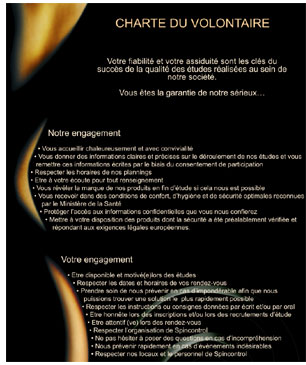 Because being a volunteer is not easy, and requires availability. You must first register, fill in (with a beautician) a very detailed information sheet taking into account more than 130 criteria and then, when his profile corresponds to the requests of a study, come to the various appointments: first to take the products and instructions for use, then to measure the results after one or more periods of time given. It is still necessary to come and fill in the self-evaluation questionnaire (alone and on Spincontrol's premises, to avoid any drift generated by possible external opinions) at the very end of the process…
Knowing that all this is not the most remunerative since there is no salary at stake, but only a"compensation" at each visit… plus of course some free comics.
Because being a volunteer is not easy, and requires availability. You must first register, fill in (with a beautician) a very detailed information sheet taking into account more than 130 criteria and then, when his profile corresponds to the requests of a study, come to the various appointments: first to take the products and instructions for use, then to measure the results after one or more periods of time given. It is still necessary to come and fill in the self-evaluation questionnaire (alone and on Spincontrol's premises, to avoid any drift generated by possible external opinions) at the very end of the process…
Knowing that all this is not the most remunerative since there is no salary at stake, but only a"compensation" at each visit… plus of course some free comics.
" We don't cheat, underlines Patrick Beau. A database of 15,000 volunteers is now available in Tours, and time is spent searching for exact profiles for each new study. It takes 4 to 5 full-time people, sometimes 2,000 phone calls to find the 20 volunteers who match the criteria and test schedule". . Because of course, another significant constraint: cosmetic laboratories would always like to impose very short deadlines and have their results as soon as the study ordered!
Reliability It is therefore necessary to juggle the constraints imposed by marketing services and those generated by volunteer management. Because matching the profile and being available is not always enough. Lab entrance signs such as the Volunteer Charter available on the Spincontrol website stress the main pitfall in the good conduct of a test until its end, and Patrick Beau confirms it " The biggest problems we have with volunteers are their inaccuracy at appointments. Delays or cancellations without notice are frequent… and disrupt the entire study process. We must understand that we are in a scientific process. Volunteers must be aware of this and be responsible in their commitment to us". . But as this is not always the case, Spincontrol systematically provides a panel of volunteers a little larger than necessary, to compensate for the inevitable defections along the way.
Honesty is also a guarantee of the reliability of the results, both in the establishment of its profile (whose data remain of course confidential) and in the respect of the conditions imposed during the study. Thus, people who test slimming products must commit not to diet during this period: any volunteer losing more than 1.5 kg is systematically out of the process…
The world of the reproducible
Rigour and respect for procedures down to the smallest detail are the key words that guide Spincontrol's activity. This applies even more to the different techniques used for each type of test. Because today, the Touraine laboratory has largely come out of MRI alone. For each product, for each claim to prove, he has specific and adapted tools… and when he does not have them at his disposal, he invents them! And there are countless systems developed in-house.
Patented innovations Thus, the good old centimetre to evaluate the refinement of a thigh circumference as part of a slimming product test is relegated to oblivion. Here, it is the laser which measures, without contact with the leg (and thus without risk of pressure which can distort the results), in a very recent special device and pending patent. Accurate and indisputable. In the same vein, it took months of work to develop an ultrasound scanner capable of measuring the thickness of adipose tissue without requiring pressure on soft areas… but the device today, combining technicality and D system (up to the simple stool to maintain the probe in the ideal position), makes it possible to draw up an ultra-precise map of a thigh and measurements to the millimetre…
Special software is also used to identify pigment spots on the skin, to measure their surface, perimeter, colour and even blurring at the edge of the spots: it has been specially designed for skin whitening products.
Spincontrol also adapted and proposed the technique of fringe projection: by a play of light projection on a flat surface, shadows, lines, surfaces can be precisely visualized and their deformations recorded for analysis. What does it take? An advanced projector, a high-resolution 3D digital camera, a powerful computer and three-dimensional coordinate calculation software… all totally designed or adapted here for cosmetic tests. And what good is that? To measure exactly the depth of a wrinkle (instead of the old silicone impressions), to evaluate the importance of a pocket under an eye, to quantify the loss of volume of a thigh, a stomach or a hip as the increase of that of a bust or the variations of the oval of a face. With the fringes projection, a cutaneous relief measurement accuracy up to 5 microns is achieved… "All this requires a lot of time and money, an excellent mastery of techniques and a lot of imagination, explains Patrick Beau, but it's necessary to meet all our customers' demands." .
Identical conditions for comparable measurements But technicality would be nothing without reproducibility. To be usable and relevant, each measurement, even several days or several months apart, must be carried out under exactly the same conditions and with exactly the same parameters, in order to be compared with the control data or the different evolutions being tested.
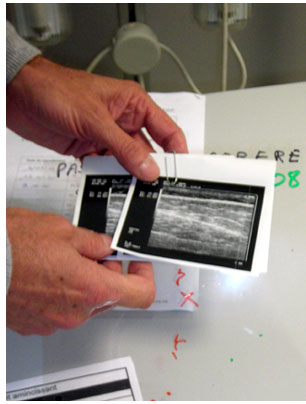 Thus a turntable was invented for body measurements: the volunteer, well positioned in the same reference points, does not have to move during the analysis session.
The ophthalmologists' restraint bench has been adapted to allow measurements of a face so always in the same place and in the same position (all being controlled by laser).
The photographs are taken in light conditions whose filtering, intensity and reflection are always identical, on a black background (the volunteers are also dressed in a cape and the hair covered with a black charlotte to avoid any interference), the camera sights are recalibrated with each shot this allows unprecedented measurements of gloss (for mattifying products) or skin color (for make-up or depigmentation products) :"The camera sights are calibrated with each shot.
We don't do art photography,
smiles Patrick Beau,
but all these procedures allow indisputable measurements and results
".
Thus a turntable was invented for body measurements: the volunteer, well positioned in the same reference points, does not have to move during the analysis session.
The ophthalmologists' restraint bench has been adapted to allow measurements of a face so always in the same place and in the same position (all being controlled by laser).
The photographs are taken in light conditions whose filtering, intensity and reflection are always identical, on a black background (the volunteers are also dressed in a cape and the hair covered with a black charlotte to avoid any interference), the camera sights are recalibrated with each shot this allows unprecedented measurements of gloss (for mattifying products) or skin color (for make-up or depigmentation products) :"The camera sights are calibrated with each shot.
We don't do art photography,
smiles Patrick Beau,
but all these procedures allow indisputable measurements and results
".
And to make sure that all these procedures are followed to the letter, even if they require a lot of time and technicality from the operators, quality controls are regularly organized internally, and the employees audited to ensure that they do not deviate from the processes to respect.
The CLCT or the human factor So everything here is technical, computerized, software, standardized and scientific? Yes. Even when the man (or woman) becomes the assessment tool.
Indeed, there was no way to measure the radiance of the complexion and its variations. It doesn't matter! A working group and some investments in research led to the creation of the CLCT technique:"Color, Brightness, Clarity, Transparency", the four parameters to be evaluated to judge. " Everything is based on the sensory explains Patrick Beau. We have created an expertise in sensory metrology, and it is experts outside the laboratory who are now able to analyze these parameters, after a long training so that everyone is as constant in his assessments as a machine could be. We are the only ones in the world, and for 10 years now, to master this technique ".
From scientist to marketing claim
Once the tests have been carried out (about 250 per year in the Tours unit alone), their results still have to be sent to the cosmetic brands that ordered them. And it is they, and more precisely their marketing departments, who will be in charge of drawing the argument best able to convince the consumer of the interest of buying their product… with proven performance. Or how to go from the raw data to the slogan that sells…
No bias, stats!
At the beginning of the process, therefore, all the rigor and ethics of Spincontrol.
An approach that first avoids as much as possible any bias that could distort the results: the products are repackaged before being entrusted to the volunteers in charge of testing them to avoid any a priori on a brand and any psychological or placebo effect, the laboratory managers themselves are unaware of the formula of the products (but always ensure the conformity of the certificate established by a toxicologist expert ensuring their safety) and sometimes even the brand from which it originates (especially when the test order comes from a large cosmetic laboratory holding several brands…).
 As for the volunteers' self-evaluation of the results, Patrick Beau is affirmative:
"The volunteers are more and more difficult, and even much harder than the buyers, who, when they have spent 60 euros on an anti-wrinkle cream, want to justify their purchase. Volunteers have nothing to justify, they are therefore more objective. And most often, self-reports confirm clinical outcomes
".
As for the volunteers' self-evaluation of the results, Patrick Beau is affirmative:
"The volunteers are more and more difficult, and even much harder than the buyers, who, when they have spent 60 euros on an anti-wrinkle cream, want to justify their purchase. Volunteers have nothing to justify, they are therefore more objective. And most often, self-reports confirm clinical outcomes
".
An ethic that expresses itself right through to the delivery of results: "I am known for my formidable integrity, says Patrick Beau. I always deliver raw results, statistics, no moods, no marketing… and whatever they are.
Small arrangements with numbers This does not prevent marketing departments from then wanting to use them in their best interest… even if they are not always satisfied with the announced figures at first..: "Less 10% depth of wrinkles in 2 months is already a very nice result, explains Patrick Beau . Even if the figure seems too low in marketing to be exploited as is. It should be stressed that in this matter, the raw measurement is less important than the contrast observed on the skin. And minus 10%, it can start to show, even if it's measured in microns… ".
Nevertheless,"10 % fewer wrinkles" is still an unsellable argument. So the allegations turn instead to the… most favourable figures in the study. Patrick Beau's decoding: "In the presentation of statistical results, the majority of results are always taken into account, following the Gauss curve principle. But if, for the largest number of women, there is a reduction in wrinkles of about 10%, during the test we were able to observe a woman for whom the gross figure rises to -25% or even more. And laboratories can then claim"up to 25% fewer wrinkles"… Marketing doesn't cheat: it only uses the numbers that are most favorable to them…" . An option that is not so rare, if you look closely at the labels of cosmetic products… Beyond the Numbers It is that an effectiveness test has a cost (from 7 000 to 100 000 euros for an anti-wrinkle product, depending on the techniques used and the size of the panel of volunteers, and 15 000 to 20 000 euros on average): it is necessary to make the investment profitable. And even if Patrick Beau points out that efficiency is not everything:" A cosmetic is first and foremost a hedonic product. The first pleasure that it brings comes from the act of buying, in these places so particular that are the perfumeries. The second pleasure is experienced at the opening, when one breathes its fragrance: one knows that the essential oils which compose the perfume can have an influence on the psyche, whether they are energizing or soothing, for example… The third pleasure is the touch, the sensation felt in contact with the texture of the product. The fourth is the well-being of the skin that lasts for a few hours after application… If in addition, after 3 months of use, you notice an effect on fine lines, it's a plus! But maybe it's less important than feeling good about the product throughout its three months… ".
Yes, it's true, and Patrick Beau insists on this point: we know that cosmetics have an influence on our morale. "Makeup, because of the variation in skin color and the uniformity of the complexion that makes you look younger, reduces stress factors by half." he quotes. So… when will a well-being index due to cosmetics, developed by Spincontrol?
To go further The Spincontol website

